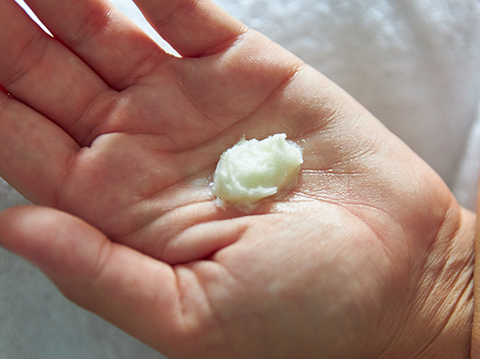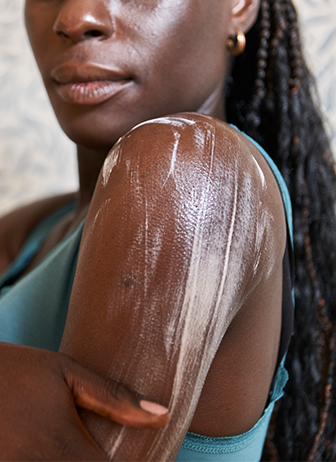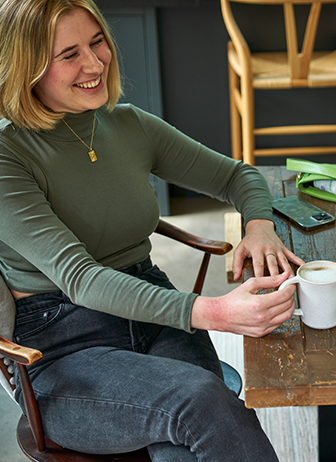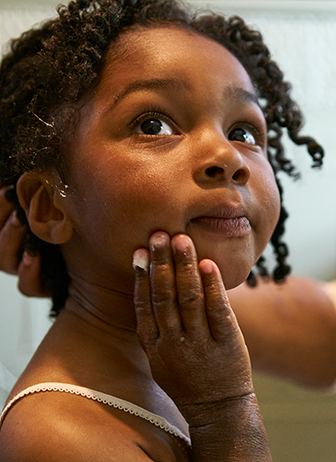An Introduction to Psoriasis
You might have heard of Psoriasis, but what does it really mean for your skin? Keep reading for all the details on the causes, symptoms and treatments of this sometimes-confusing condition.
What is Psoriasis?
Similar to Ichthyosis, Psoriasis is all to do with the rate skin makes and replaces its cells. Usually, this process takes around three to four weeks. But for people with Psoriasis, this speeds right up to just three to seven days - resulting in a build-up of skin cells that creates the affected patches.¹
It’s estimated that Psoriasis affects 2-3% of the UK population – so there are 1.8 million of you out there with skin in a hurry!²
On top of this, about half of everyone with the condition experiences nail Psoriasis too, which has its own specific symptoms affecting this area.³ (More on this later.)
What causes Psoriasis?
The most important thing to know is that Psoriasis isn’t contagious! This is a really common myth surrounding the condition, but you can’t pass it to other people or transfer it to different areas of your own skin.⁴
Recent research has shown that it often starts in the immune system, so T-Cells (the ones that fight infections and heal wounds) become overactive, and that’s what causes the rapid production of the skin cells.⁵ It’s not yet clear what makes them so overactive, but certain medications (such as those used to treat malaria, blood pressure or angina), stress, anxiety, smoking, obesity, infections or exposure to intense sunlight are all factors.⁶,⁷
Psoriasis has also been identified as hereditary, so you’re more likely to develop it if you have a family member with it too.⁸ And while it can appear at any age, men and women usually first spot it between the ages of 20 and 30 or 50 and 60.
What does Psoriasis look like?
You’ll most often see patches of Psoriasis in different areas of the body. They tend to be pink and red, with the look of ‘scales’ that can appear white or silvery. On brown or black skin, the patches might also look more purple or dark brown. For many people, they can be itchy and sore too – and in severe cases, can cause skin at the joints to crack and bleed.⁹
As we mentioned earlier, about half of people with Psoriasis have the specific nail form of the condition too. This appears as an indentation on the surface of the nail or pink areas underneath it. It can also cause separation of the nail plate from the nail bed, or the nails to become thicker and yellow.¹⁰
Are there any other symptoms of Psoriasis?
Some people with Psoriasis have been known to develop Psoriatic Arthritis, which is a specific form of Arthritis associated with the condition. It affects the joints in the knees, hands and feet, and some areas where the tendons join to the bone – and isn’t always linked to the severity of the skin condition. For example, people with mild or moderate Psoriasis can also develop Psoriatic Arthritis.¹¹
How should you treat Psoriasis?
Psoriasis treatment usually starts with a visit to your GP for a diagnosis. If you recognise any of the symptoms above, book an appointment and they’ll discuss the type, severity and options with you. How to treat Psoriasis usually falls into three categories:
- Topical: applying creams and ointments to your skin
- Phototherapy: exposing your skin to certain types of UV light
- Systemic: medication that works across the body, usually taken in a tablet or by injection.
Finding the right Psoriasis treatment can be tricky, and sometimes these types may be used in different combinations. Doctors will usually suggest a milder, topical treatment to start with (such as an emollient), then look at the other options if this doesn’t work.
If you’re looking for how to cure Psoriasis or how to get rid of Psoriasis, it isn’t really as simple as that. It’s a condition that can flare up and down at different times, so it’s a good idea to create a care plan with a health professional so you can manage it day-to-day.¹²
How can I prevent Psoriasis?
This is different to curing or getting rid of the condition, and you can easily prevent Psoriasis from getting in the way of living your best life!
For a lot of people, using an effective emollient such as Epaderm Ointment and Epaderm Cream is a great way to keep the skin moisturised. Gently rub it over those pesky patches to lock in the moisture and add a protective layer.
You can also help prevent Psoriasis flare-ups by eating healthily, reducing stress and exercising regularly – because when you feel good, your skin feels better too!¹³
Find out more about Psoriasis
So that’s all the top facts on Psoriasis! If you’d like to keep reading up or look at any symptoms or treatments in more detail, here are some really helpful resources:
The Psoriasis Association: https://www.Psoriasis-association.org.uk/
NHS: https://www.nhs.uk/conditions/Psoriasis/
The British Skin Foundation: https://knowyourskin.britishskinfoundation.org.uk/condition/Psoriasis/
And if you’d like to know more about all the ways Epaderm can soothe your skin, just click here.
More Skin Conditions
Epaderm Library
Our website is jam-packed full of useful information from our skin blogs, user case studies to our in-depth FAQs. Discover more by clicking on the relevant section!References
¹https://www.nhs.uk/conditions/psoriasis/
²https://www.psoriasis-association.org.uk/about-psoriasis
³https://knowyourskin.britishskinfoundation.org.uk/condition/psoriasis/
⁴https://www.psoriasis-association.org.uk/about-psoriasis
⁵https://www.psoriasis-association.org.uk/about-psoriasis
⁶https://www.psoriasis-association.org.uk/about-psoriasis
⁷https://knowyourskin.britishskinfoundation.org.uk/condition/psoriasis/
⁸https://knowyourskin.britishskinfoundation.org.uk/condition/psoriasis/
⁹https://www.nhs.uk/conditions/psoriasis/
¹⁰https://knowyourskin.britishskinfoundation.org.uk/condition/psoriasis/
¹¹https://www.psoriasis-association.org.uk/about-psoriasis
¹²https://www.nhs.uk/conditions/psoriasis/
¹³https://knowyourskin.britishskinfoundation.org.uk/condition/psoriasis/


















